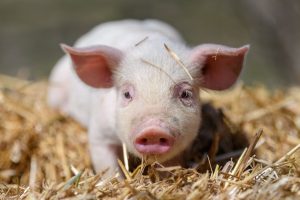
 05 Jul 2022
05 Jul 2022
Feed structure and its potential benefits in weaned piglets. Maximizing gut health through the creation of structure in feed appears to be a promising tool, but what does it imply?
Introduction
The processing of pig diets has gained more attention in recent years. Traditionally in most EU countries, pig diets have been highly processed. Initially grinding all raw materials, usually with a hammer mill, and then pelletizing them. Through this processing method, feed efficiency in pigs can be increased by 2% compared to the use of flour diets. However, it has been observed that if diets are crushed into very fine particles (>80% of particles < 200 μm), the retention time in the stomach is considerably reduced, which can lead to the onset of stomach ulcers and gastric barrier malfunctions. On the other hand, a prolonged retention time of stomach contents can prove beneficial in piglets up to a certain extent. For example, an improvement in protein hydrolysis within the stomach can result in increased protein digestibility throughout the small intestine.

Piglet on hay and straw at pig breeding farm
Importance of feed structure (redefining it purpose)
Nutritionists must consider how they can create and add structure to feed in order to increase nutrient digestibility, and improve gastric functions and gut health. This is a much better approach than simply thinking about how to make diets as fine as possible to increase nutrient digestibility. Thus, it is important to create sufficient structure within the diet by adding coarse particles to stimulate optimal stomach function and a gradual transition/flow of digest particles from the stomach to the small intestine. This feed structure can be created by grinding a single ingredient of low energy value, such as wheat bran or wheat straw. It has been shown (Molist et al. 2011) that feeding piglets with coarse ground wheat bran instead of fine ground (inclusion level of 4%) during the first two weeks post-weaning, is effective in reducing E. coli adhesion to the ileal mucosa and decrease the severity of diarrhea after a challenge with enterotoxigenic E. coli.
Figure 1. E.coli adhesion and infection severity
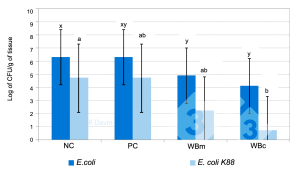
Source: R.Davin 333
Efficacy of coarse particle dietary inclusion
Although the number of studies evaluating the efficacy of coarse particles in the diet of weaned piglets is limited, studies in fattening pigs have consistently shown beneficial effects. In a study by Hedemann et al. (2005), young fattening pigs (33 kg by weight) that were fed coarse-ground flour or pellet diets (80.1% of particles <1000 μm, 15.6% between 1000 and 2000 μm, 2.1% between 2000 and 3500 μm and 2.3% > 3500 μm) showed a higher relative weight of the empty stomach (+7%) compared to those fed fine-ground diets (93.6% of particles). <1000 μm, 6.4% between 1000 and 2000 μm, 0.0% between 1000 and 2000 μm and 0.0% > 3500 μm). In a second study (Warneboldt et al., 2016) with pigs within the same weight class, it was shown that the pH of the content found in the gastric fundus area of pigs fed coarse grinding diets (geometric mean diameter 671 μm) was lower (pH of 2.5) compared to that of pigs fed fine-ground diets (geometric mean diameter 217 μm; pH of 5.0). In a third study by Bornhorst et al (2013), stomach retention time was measured in pigs weighing 30 kg which were fed a diet containing a high proportion of brown rice (with rice husk) or husked white rice.
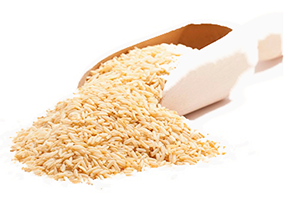 The retention time in the stomach of pigs fed brown rice was prolonged compared to those fed husked white rice. This positive effect on stomach retention time was attributed to the fact that the rice husk remains in the stomach for a longer time. The increased retention of rice husk in the stomach resulted in a lower stomach pH 20 minutes after the pigs were fed, compared to those fed the husked white rice-based diet.
The retention time in the stomach of pigs fed brown rice was prolonged compared to those fed husked white rice. This positive effect on stomach retention time was attributed to the fact that the rice husk remains in the stomach for a longer time. The increased retention of rice husk in the stomach resulted in a lower stomach pH 20 minutes after the pigs were fed, compared to those fed the husked white rice-based diet.
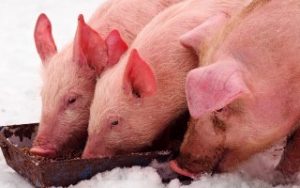
Piglets consuming a rice based diet
Final considerations
In practice, it can be challenging to find fibre-rich by-products (e.g. wheat bran or oat husk) that can be ground into coarse particles and therefore provide structure or do not contain unwanted compounds (e.g. mycotoxins). If feed structure is not achieved by adding this type of fiber-rich by-products , it is necessary to find other types of food ingredients. Protein sources should not be ground into coarse particles, in order to prevent any alterations in protein digestibility.
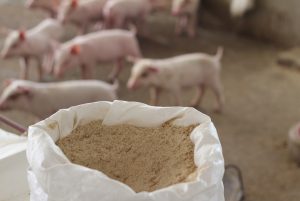
Therefore, one of the only available options left for adding structure into feed are starchy sources, such as cereals. One possibility can be to add a proportion of cereals as whole grains in the mixer and then pelletize the diet. Another possibility can be to grind a small proportion of cereals (5%) with a roller mill and then pelletize the diet. The success of this strategy will depend on the percentage of cereals, whether whole or crushed, that will maintain its structure after pelletizing. It has been observed that adding 5% of crushed barley to the mix and then pelletizing the diet might be enough to generate positive effects on stomach retention and gut health of weaned piglets.
Conclusion
Nonetheless more research must carried out in the coming years on how to optimize pig feed structure by processing some ingredients in unique ways. The era of grinding all ingredients in the same way is probably close to an end. Considering the importance of achieving a balance between feed efficiency and stomach-intestinal health in pigs.
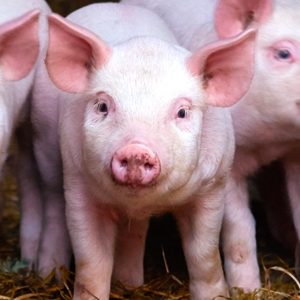
Source: Modified from “Estructura y salud intestinal en lechones destetados”
Subscribe now to the technical magazine of animal nutrition
AUTHORS

Hybrid Rye Potential in Laying Hen Feed Rations
Gwendolyn Jones
A day in the life of phosphorus in pigs: Part I
Rafael Duran Giménez-Rico
Use of enzymes in diets for ruminants
Braulio de la Calle Campos
Minerals and Hoof Health in the Pregnant Sow
Juan Gabriel Espino
Impact of Oxidized Fats on Swine Reproduction and Offspring
Maria Alejandra Perez Alvarado